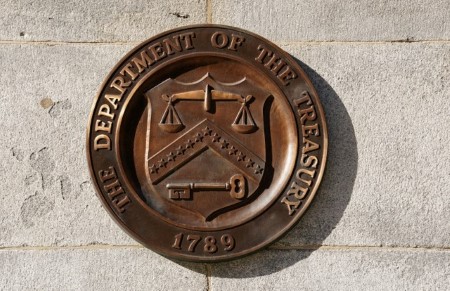




Philippines Trade Update: Exports momentum continues
 DOWNLOAD
DOWNLOAD

Quarterly Economic Growth Release: More BSP cuts to come
 DOWNLOAD
DOWNLOAD

Monthly Economic Update: Fed catches up
 DOWNLOAD
DOWNLOAD


Ten-year yield hits 3-week low, while 3-year auction sees decent demand

NEW YORK – The yield on the benchmark 10-year Treasury note fell on Tuesday amid persistent hope that the Federal Reserve would lower rates this year, while other maturities were steady after a chunky sale of three-year notes saw decent demand without a rate concession.
The Treasury sold USD 58 billion of the notes at a high yield of 4.605%, about a basis point below where three-years were trading at the time, with a bid-to-cover ratio of 2.63, the highest since a three-year sale in January.
The three-year was just a first taste of supply in the pipeline this week. The Treasury will sell USD 42 billion in 10-years on Wednesday and USD 25 billion of 30-year bonds on Thursday.
Kim Rupert, managing director of fixed income at Action Economics in San Francisco said the auction went well and gave it a “B” grade.
“It’s a good start,” Rupert said. “It priced a little bit through where it was trading right into the auction, so the fact that yields were a little bit lower was a good sign and demand was a little bit better than average.”
The three-year note was last yielding 4.649%, up 0.6 bp from late Monday.
The yield on 10-year notes was 2.8 basis points lower from late Monday at 4.461%. It fell to 4.42%, the lowest since April 10, continuing a decline that accelerated after Friday’s release of a smaller-than-expected rise in April nonfarm payrolls.
The jobs report added juice to a Treasuries rally after the Federal Open Market Committee said the recent uptick in inflation and economic growth was unlikely to derail rate cuts this year. It all but ruled out rate hikes.
The 2-year note yield, which typically moves in step with interest rate expectations, was up 0.6 basis points at 4.8283%. On Friday it fell to 4.716%, the lowest since April 5.
“When the 2-year was over 5% and the 10-year was nearly at 4.70%, there was a good interest in the Treasury market. Now that we’re down 25-30 basis points there is less interest in it,” said Stan Shipley, fixed income strategist at Evercore ISI in New York.
“I don’t think the auctions we get this week are going to be nearly as robust as the last ones we had,” he said. “And from what we hear from clients they are not as enthusiastic about this either.”
The calendar of economic indicators is light this week. So the waiting game is on ahead of the April reads on producer prices next Tuesday and especially the widely watched CPI number next Wednesday, which will provide insight on whether inflation has begun to come down toward the Fed’s 2% target rate.
Meanwhile, numerous Fed officials are on record this week. On Tuesday, Federal Reserve Bank of Minneapolis President Neel Kashkari told the Milken Institute 2024 Global Conference that a rate cut this year is still a possibility, but also said if rates need to be held for an extended period, or raised, the Fed would do that.
The 30-year bond yield was down 3.8 basis points at 4.6044%, also hitting its lowest since April 10.
The yield-curve spread between yields on two- and 10-year Treasury notes, closely watched as an indicator of economic expectations, was at a negative 34.8 basis points, more inverted than -33.9 bp late on Monday.
In the fed funds futures market, traders are pricing in a 66% chance the Fed will pivot in September with a 25 basis point cut at that meeting, unchanged from Monday. The second cut is priced for December.
(Reporting by Alden Bentley, Editing by Nick Zieminski)
This article originally appeared on reuters.com





 By Reuters
By Reuters